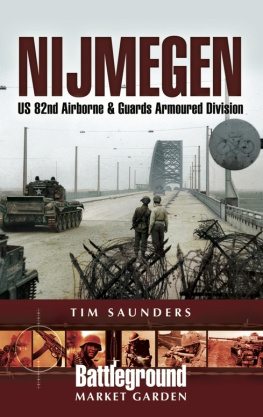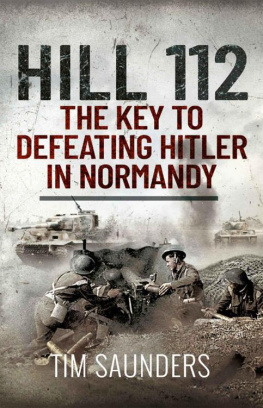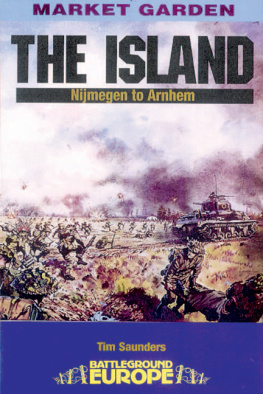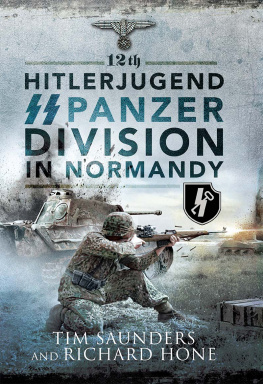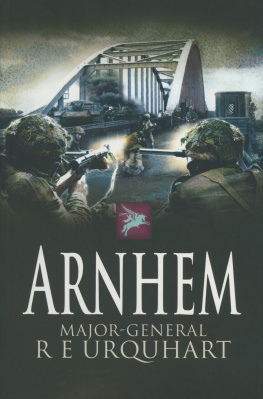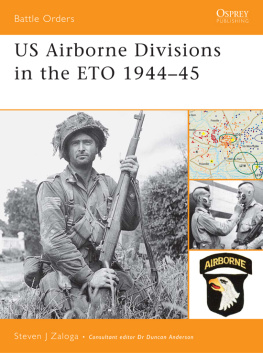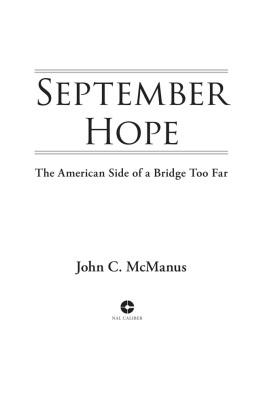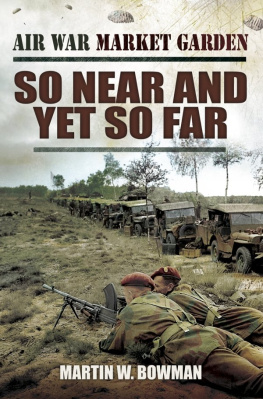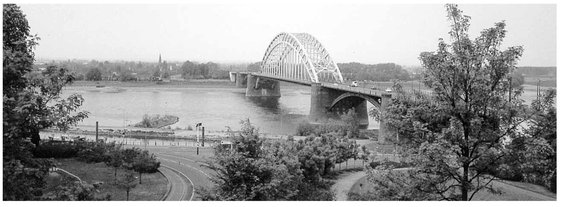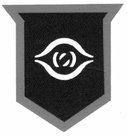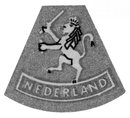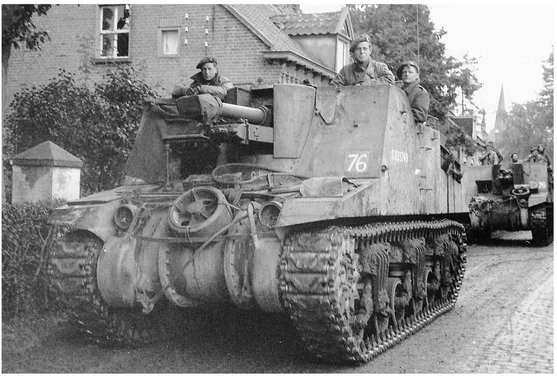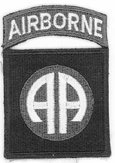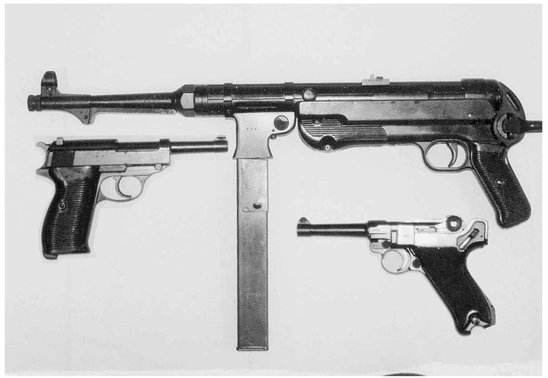I am indebted to veterans on both sides of the Atlantic for their help and advice in writing this book. There was not much Battleground style material readily available on the Grave, Groesbeek and Nijmegen areas of the North West European Campaign but veterans contributions have helped fill this gap. Again, hard pressed staff from the regimental headquarters of the British units, whose fighting is covered by this book, have been most helpful; be they overworked regimental secretaries or highly knowledgeable volunteers. In America, veterans associations have helped me locate members who had tales to tell. Visits to the Public Record Office and airborne museums in Britain and Holland to view their archives were essential and I thank the staff unreservedly for their help.
It would be invidious to list by name all the Dutch people from the Nijmegen and Groesbeek area who have helped me in so many ways. Their help ranged from locating the more obscure sites to the provision of maps and photographs. However, their greatest contribution was their encouragement, warmth and friendliness. With many ad hoc German formations and units taking part in the fighting at Nijmegen, it has been difficult to make contact with former German soldiers. However, one particular divisional association has been of considerable help in clearing up some of Nijmegens MARKET GARDEN myths.
Finally, I will again thank my family for their extremely tolerant support of this project and encouragement. I am also most grateful for the hours they have spent reading through the draft manuscript spotting my errors and inconsistencies. I am particularly grateful to my father-in-law Lieutenant Colonel Geoff Hill (Royal Engineers) for his sound military advice. Thank you one and all.
APPENDIX I
ORDERS OF BATTLE
XXX BRITISH CORPS
GUARDS ARMOURED DIVISION
NB. The Guards Armoured Division had by September 1944 departed from their official ORBAT to form, uniquely, regimental groups of armour and infantry that habitually fought together. This closeness, unusual at the time, between the two arms brought many benefits. However, their critics, with little solid evidence, also use this grouping to attribute a certain ponderousness to the Division.
HQ GUARDS ARMOURED DIVISION
Guards Armoured Division Signal Regiment (-)
HQ 5th GUARDS ARMOURED BRIGADE (Group Hot)
1st (Motorized) Battalion, The Grenadier Guards
2nd (Armoured) Battalion, The Grenadier Guards
1st (Armoured) Battalion, The Coldstream Guards
5th Battalion, The Coldstream Guards
55th Field Regiment Royal Artillery
14th Field Squadron Royal Engineers
HQ 32nd GUARDS ARMOURED BRIGADE (Group Cold)
2nd (Armoured) Battalion, The Irish Guards
3rd Battalion, The Irish Guards
1st Battalion, The Welsh Guards
2nd (Armoured Recconnisance) Battalion, The Welsh Guards
153rd (Leicestershire Yeomanry) Field Regiment Royal Artillery
615th Field Squadron Royal Engineers
GUARDS ARMOURED DIVISIONAL TROOPS
HQ 21st Anti-Tank Regiment Royal Artillery
HQ 94th Light Anti-Aircraft Regiment Royal Artillery
HQ Guards Armoured Division Engineer Regiment,
Field Park Company, 11th Bridging Troop RE and Divisional Postal Unit
Number 1 Independent Machine-gun Company, The Royal Northumberland Fusiliers
Royal Army Service Corps
HQ Guards Armoured Division RASC Battalion, and Tank Delivery Squadron
Royal Army Medical Corps 19th Light Field
Ambulance, 128th Field Ambulance and Field
Hygiene Section
Royal Army Ordnance Corps Guards Armoured
Division Ordnance Field Park, Company
RAOC and Mobile Bath Unit
Royal Electrical and Mechanical Engineers 5th
Guards Armoured Brigade Workshop, 32nd
Guards Armoured Brigade Workshop
Military Police Guards Armoured Division Company Royal Corps of Military Police
Intelligence Corps Field Security Section
8th INDEPENDENT ARMOURED BRIGADE
4th / 7th Royal Dragoons Guards
13th / 18th Royal Hussars
Nottinghamshire (Sherwood Rangers) Yeomanry
12th Battalion, Kings Royal Rifle Corps
147th (Essex Yeomanry) Field Regiment Royal Artillery
(Self Propelled) Anti-Tank Battery Royal Artillery
8th Armoured Brigade Signal Squadron
8th Armoured Brigade Workshop REME
8th Armoured Brigade Ordnance Field Park
552nd Company Royal Army Service Corps
168th (City of London) Light Field Ambulance RAMC
265th Forward Delivery Squadron RAC
ROYAL NETHERLANDS BRIGADE PRINCESS IRENE
147 (Essex Yeomanry) Field Regiment RA in Nijmegen.
21st ARMY GROUP TROOPS (from Army Groups Royal
Artillery to XXX Corps)
64th Medium Regiment Royal Artillery (3.5 inch guns)
419th Heavy Battery (155mm guns)
FIRST ALLIED AIRBORNE ARMY
BRITISH AIRBORNE CORPS
HEADQUARTERS 82nd AIRBORNE DIVISION
82nd Signal Company and 82nd Headquarter Company
504th PARACHUTE INFANTRY REGIMENT
1st Battalion, 504th Parachute Infantry Regiment
2nd Battalion, 504th Parachute Infantry Regiment
3rd Battalion, 504th Parachute Infantry Regiment
505th PARACHUTE INFANTRY REGIMENT
1st Battalion, 505th Parachute Infantry Regiment
2nd Battalion, 505th Parachute Infantry Regiment
3rd Battalion, 505th Parachute Infantry Regiment
508th PARACHUTE INFANTRY REGIMENT
1st Battalion, 508th Parachute Infantry Regiment
2nd Battalion, 508th Parachute Infantry Regiment
3rd Battalion, 508th Parachute Infantry Regiment
325th GLIDER INFANTRY REGIMENT
1st Battalion, 325th Glider Infantry Regiment
2nd Battalion, 325th Glider Infantry Regiment
3rd Battalion, 325th (formerly 401st) Glider Infantry Regiment
DIVISIONAL TROOPS
82nd Parachute Maintenance Battalion
307th Airborne Engineer Battalion
307th Airborne Medical Company
80th Airborne Antiaircraft Battalion
319th Glider Field Artillery Battalion
320th Glider Field Artillery Battalion
376th Parachute Field Artillery Battalion
456th Glider Field Artillery Battalion
782nd Ordnance Company
407th Quartermaster Company
666th Quartermaster Truck Company
82nd Military Police Platoon
82nd Reconnaissance Platoon
The German MP 38/40 Sub machine-gun was arguably the most effective weapon of its class ever produced.
German side-arms. The Luger was privately purchased (right) by many officers in preference to the P38 Walther (above).

